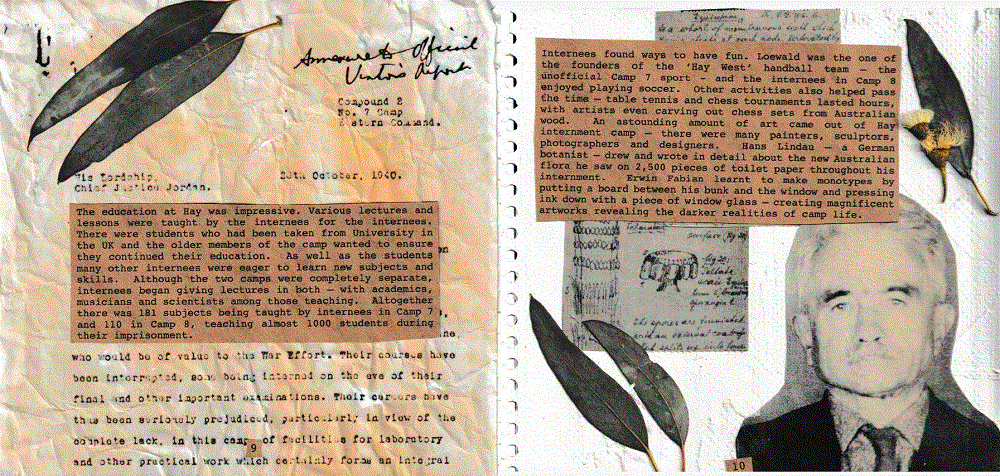There are many different ways to tell a story, especially one as complicated as that of Heinz and Fay Castles. Elsewhere on our site, we interviewed Belinda Castles, Heinz and Fay's granddaughter, about the journey of turning her grandparents' story into the novel Hannah & Emil. In 2020, Hannah Robinson, Heinz and Fay's great-granddaughter, reached out to share with us a project that their lives had inspired. We are delighted to share her work on the Stories from the Dunera and Queen Mary website.
I am the great-granddaughter of Heinz and Fay Castles (Heinz Schloesser and Fay Jackson). This year, in the final year of my history undergraduate degree, I was asked to write a personal history. I immediately thought of Heinz and Fay. I knew a little about their story but it was fragmented, hazy information; I thought it would be a perfect thing to research afresh. I began by reading some of Fay’s letters she wrote to friends in Australia in the 1960s, then the letters she wrote during the Second World War imploring Australian and British officials to release Heinz, the love of her life, from internment. Their story fascinated me. I was moved also by the personal stories of other Dunera internees and astounded by the amazing things they had created during their internment. I was especially interested in the fact that there were so many lectures in camp – I suppose everyone had to fill time! I created a scrapbook to engage the reader and evoke a strong emotional response to the stories, rather than just reciting dry historical facts and figures. I have derived immense enjoyment from learning about and recreating some of their story.
Next year I am studying History honours and will focus on the Dunera. I am looking forward to researching and learning more.
Hannah Robinson
My Dunera scrapbook is at this link: https://issuu.com/hannahrobinsonhistory/docs/scrapbook

Images © Hannah Robinson
Author: Hannah Robinson













